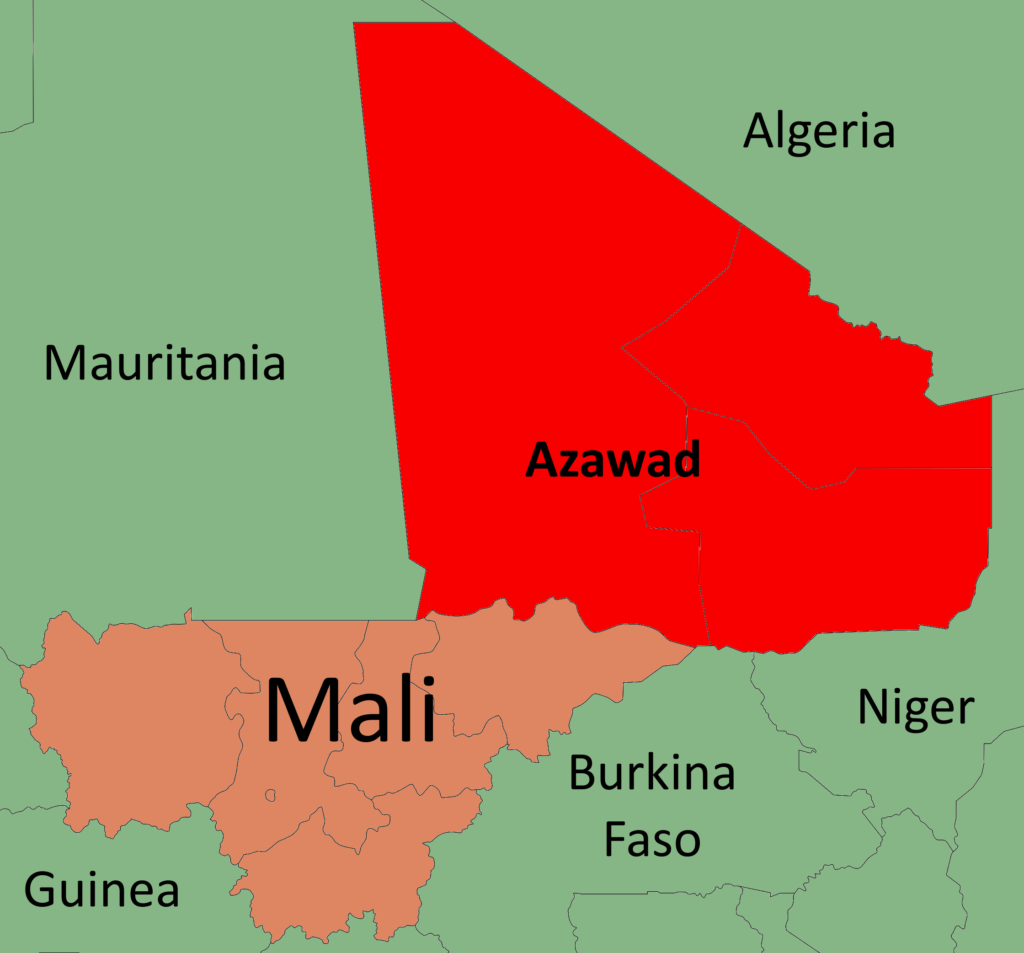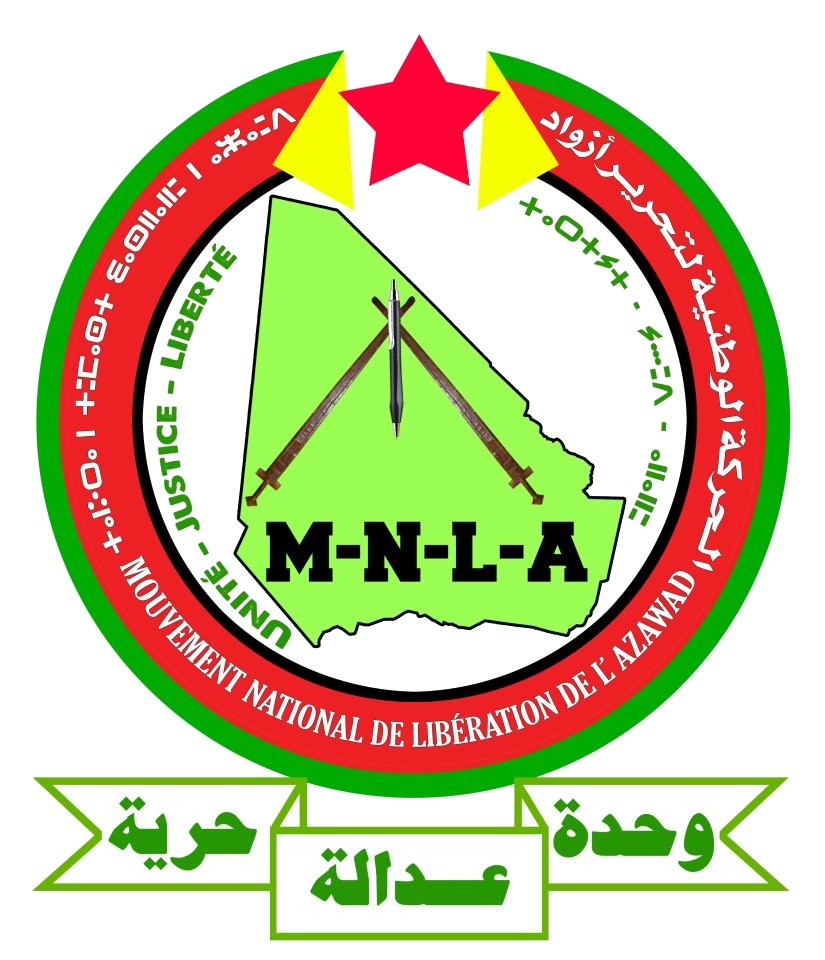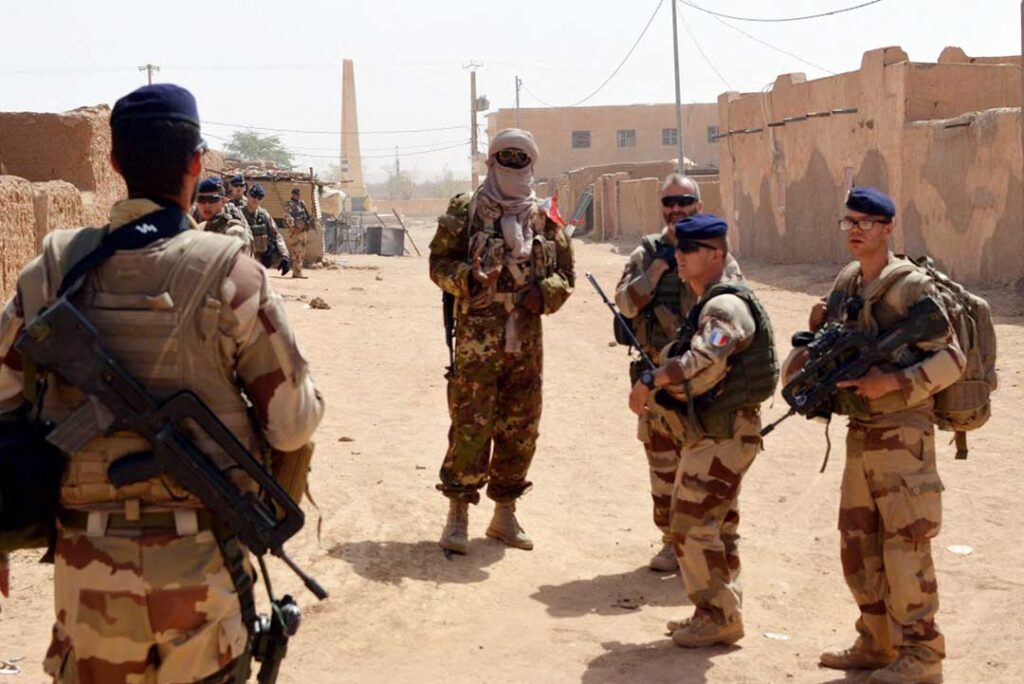West Africa: the Tuareg
Are the links between the Tuareg and the jihadists real, or part of a self-fulfilling prophecy created by outside forces?
by Jeremy H. Keenan
The future of the Tuareg in Mali has never seemed more uncertain. Their latest rebellion, which began in January 2012, led to a French-led invasion of the country a year later. This insurrection, and the on-going crisis in northern Mali,has drawn world attention to the strain of separatism that exists among these desert people, and the deep roots they have in this region, which covers about 2m square kilometres of diverse desert landscape and crosses several state borders. Mali’s new president, Ibrahim Boubacar Keïta – elected since the invasion – has made peace talks with the Tuareg a priority. But while these have yet to begin, more than 200, 000 Tuareg remain in refugee camps in Burkina Faso, Mauritania and Niger.
Though it is notoriously difficult to count nomadic people, the Tuareg probably number between 2m to 3m, based on an extrapolation of existing census figures combined with language and other regional surveys. Historically, their economy has been one of semi-nomadic pastoralismin the territory stretching from western and southern Libya to southern Algeria and most of northern Niger and Mali.In pre-colonial times, they famously also controlled the trans-Saharan caravan routes.

During the 19th century, Tuareg people took up arms against French penetration of the Sahara, making the colonisation of this region bloody and arduous. In the post-colonial world their chief grievance – common to Tuareg in all the countries they live in – is a sense of political, economic and geographic marginalisation and what many of them perceive as abuse of their indigenous land rights.
But while the Tuareg share a common language – Tamasheq – and a form of Sufi Islam generally regarded by most neighbouring Arab tribes as “lax”, they are not as homogeneous as many western observers make out. In traditional times, the Tuareg comprised seven or eight major tribal confederations. They have never formed a single political entity. Even theword Tuareg is not indigenous to the Tuareg people and is, in fact, only used by them in the sense that it is used by the external world. They refer to themselves by many terms, mostly designating their place of abode, tribe, class or language.
In Niger and Mali, recent Tuareg history has been characterised by a cycle of armed rebellion and increasingly short-lived peace settlements. (Until a group of Tuareg tied their fortunes to the ill-fated regime of Muammar Gaddafi in Libya,they had not taken up arms there or in Algeria, mostly because of their small numbers in these countries and the strength of the security forces there.) The armed uprising in Mali in January 2012, however, was different from previous rebellions for three main reasons.
First, the Tuareg fighters who came together in late 2011 to form the MNLA (National Movement for the Liberation of Azawad) had a single, clear objective: the independence of their northern Mali homeland, called Azawad.
Second, unlike earlier uprisings, the hundreds of Tuareg fighters who returned – angry and disillusioned – from Libya in 2013 were in possession of a surfeit of arms. They felt even more marginalised upon their return because the political elite in Bamako ignored their resettlement and integration into Malian society.
And third, perhaps most crucially, Algeria and other interested onlookers thought this rebellion might succeed,at least from a military standpoint. Indeed, within a couple of months of the first shots being fired, in January, the Tuareg drove the Malian army out of most of northern Mali, resulting in a coup d’état in Bamako and the MNLA proclaiming Azawad’s independence on April 6th 2012.
The idea of an independent Azawad has long appeared as a major threat to Algeria, which is extremely wary of secessionist moves by its own Tuareg population. Is it possible that Algeria helped to create and then support two new Islamist “jihadist” groups, MUJAO (Movement for Oneness and Jihad in West Africa), and Ansar al-Din, in northern Mali, with the intention that they would discredit and ultimately take over and destroy the predominantly Tuareg independence movement?
This strategy cannot be discounted. It is a well established mode of operation for the Algerian government, which since the early 1990s, through its secret military service (DRS), has infiltrated and manipulated most of the Islamist and “terrorist” groups in the region for its own ends. These ends being chiefly to discredit the Islamists, bolster relations with Washington and to derail any chance of political compromise in Algeria.
Probably the best known and historically critical wasthe kidnapping of 32 European tourists in the Algerian Sahara in March 2003.The official story, generated by the Algerian media and repeated in Europe, was that the Groupe Salafiste pour la Prédication et le Combat (GSPC) – which would later be renamed al-Qaeda in the Islamic Maghreb (AQIM) – captured and held the tourists hostage, but the truth is that the operation was organised by Abderrazak “El Para”, a former Algerian special forces officer.
When the released hostages identified El Para as one of their kidnappers, the Algerian government – his former employer – claimed that El Para was now acting on behalf of the GSPC. However, the GSPC itself never claimed responsibility for kidnapping the tourists and has never been linked with El Para. Suspicion grew as soon as the hostages were released and more evidence of El Para’s links with Algeria’s secret intelligence services came to light.
This suspicious incident was seminal in the history of the region, taking place as it did just one year after the launch of the US Saharan-Sahelian front of the global war on terror. Washington proceeded to use these hostage-takings to set in train a long, and largely false, narrative about terrorism in the Sahara-Sahel and its threat to other parts of Africa.

This “threat”, depicted on Pentagon-produced maps as a “Terror Corridor/Zone” (which effectively encompassed the Tuareg’s traditional territory) was used to justify US President George W Bush’s Pan-Sahel and subsequent Trans-Saharan Counter-Terrorism Initiatives (TSCTI) in 2004 and 2005 respectively, as well as the creation in 2008 of a new US military operation, Africa command or AFRICOM.
This is an issue that I have explored in greater detail in two books (“The Dark Sahara” and “The Dying Sahara”), in which I argue that Algeria’s secret intelligence service (DRS)operates as a destabilising force throughout the region with the help of US military intelligence services under the Pentagon’s Proactive, Pre-emptive Operations Group (or P2OG, as it has become known), a programme authorised by then US secretary of defence Donald Rumsfeld.
This group emerged from the now notorious Summer Study on Special Operations and Joint Forces in Support of Countering Terrorismpresented to Rumsfeld by his Defence Science Board in 2002. Excerpts from this study were released in August of that year, with journalists Pamela Hess, William Arkin and David Isenberg, among others, publishing further details and analysis of the plan. The study recommended the creation of the P2OG as a covert organization that would carry out secret missions to “stimulate reactions” among terrorist groups by provoking them into undertaking violent acts that would expose them to counter attacks by US forces.
Whether or not one accepts this premise of US-Algerian collusion, an undeniable result of this escalation of the “war on terror” is that the region’s governments have been able to increase their repression of legitimate political opposition movements, particularly the Tuareg, who are generally perceived as being opposed to central governments and therefore “troublesome”.
A key feature of this strategy has been for the governments of the Sahel, notably Niger and Mali, but also Algeria, to provoke the Tuareg into taking up arms to justify “military action” against them (i.e., their repression) and to earn “terrorism rents” in the form of US largesse and further military aid. The increased level of US funding to these countries is opaque. However, the proposed budget for the TSCTI in 2005 was $100 million a year for five years.
The “war on terror” has also had a devastating impact on almost all the civilian populations of these Saharan-Sahelian countries, mostly because of the increased confidence and military strength it gave to the repressive apparatus of the region’s highly authoritarian and undemocratic states. Of all the groups, the Tuareg have undoubtedly suffered the most for several reasons.
First, most of the post-2002 terrorist activity and related criminal activities, such as drug trafficking, have taken place within the traditional Tuareg territory, the area depicted on the Pentagon maps as a “Terror Zone”.
Second, the “war on terror” has put a near-total stop to the region’s tourism, thus destroying the livelihoods of many Tuareg and the main source of cash income to their economies. No detailed study has been undertaken of the contribution of tourism to the various Tuareg communities. However, my own calculations, based on work with Tuareg travel agencies during this period, estimated that the annual loss to the Algerian Tuareg from 2003 onwards was at least 5m euros per year, and probably about the same for Tuareg in Niger. The figure for Mali was probably a little less.
Indeed, this catastrophic loss of livelihoods has been a major factor in forcing many Tuareg into banditry, other forms of illegal activity such as drug and cigarette trafficking and even joining the Islamist groups on a mercenary basis. The “war on terror”, in other words, has turned into a self-fulfilling terrorism nightmare.
And finally, the region’s governments have used this opportunity to portray the Tuareg as closely aligned with Islamic terrorists. In 2006, a US State Department official played her part by referring to the Tuareg people, during a formal briefing in Washington, as “putative terrorists”.
The current situation is one of profound uncertainty. Promised peace talks between the new Malian government and the Tuareg rebels have yet to commence. The UN peace force in Mali is struggling at 50% of its planned strength because, among other reasons, the Nigerian troops returned to their country and the Chadian troops have gone on strike. And despite the flood of so-called “development experts” into Bamako, there are few signs that Bamako’s political classes or the international community have any clear plan or real intent to resolve the fundamental problems of this badly fractured country, especially the long-standing problems of its northern, predominantly Tuareg (and Arab) regions.

Au cours de ces discussions, le RSSG a tenu à rappeler l’importance de l’accord préliminaire de paix signé récemment à Ouagadougou.
The Tuareg, both in Mali and neighbouring countries, now probably share a greater sense of pessimism over their future than at almost any other time in their history. The last decade, especially the last two years, has made them aware that they have little support in the outside world, especially now that Colonel Gaddafi, to whom they had tied their fortunes, has gone. Many feel that the international community has let them down.
More than 200,000 Malian Tuareg remain in refugee camps in Mauritania, Burkina Faso and Niger, with very few willing to venture back to their still very insecure homes. Most say they will only return “when Azawad is Azawad”: that is, truly independent. They may wait a very long time. At best, Mali’s Tuareg might gain a degree of regional autonomy, possibly even some form of federalism, but within the Malian state. Few are holding out much hope of gaining major concessions. Many rebels, perhaps even the majority, are already talking of waiting for the French military to leave and then “having another go at Mali”.
One possible piece of good news is that Algeria is currently dismantling its DRS, the major destabilising force in this entire region. Whether it will re-emerge, or what will take, its place, remains unknown. Indeed, the future of this region of Africa and its Tuareg peoples has probably never been more uncertain and unpredictable than it is now.



